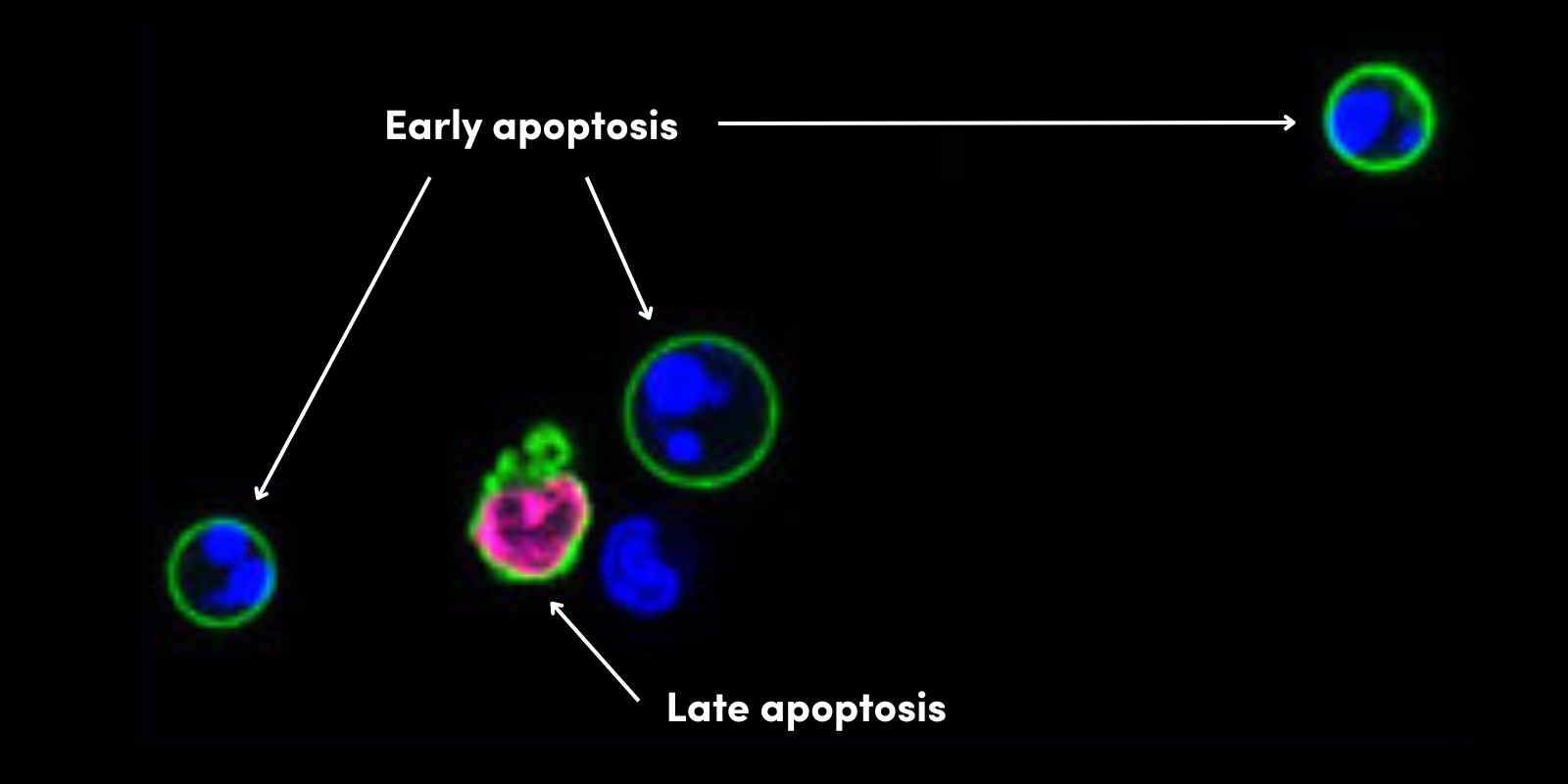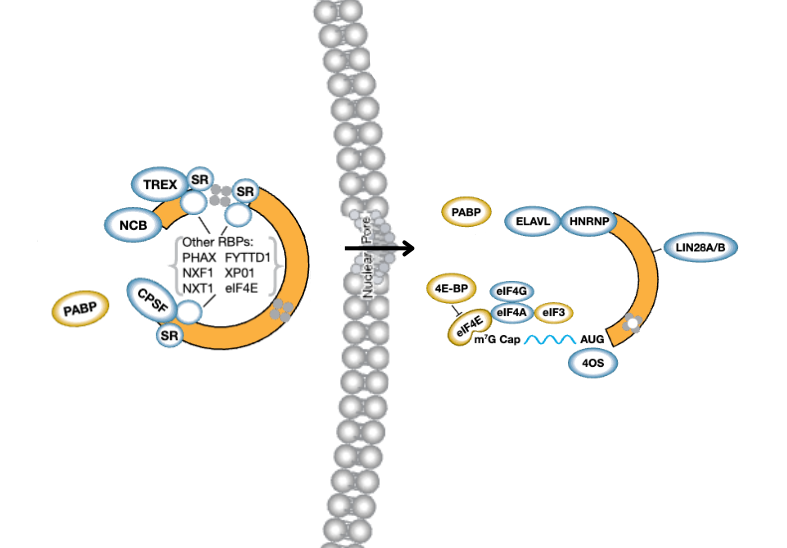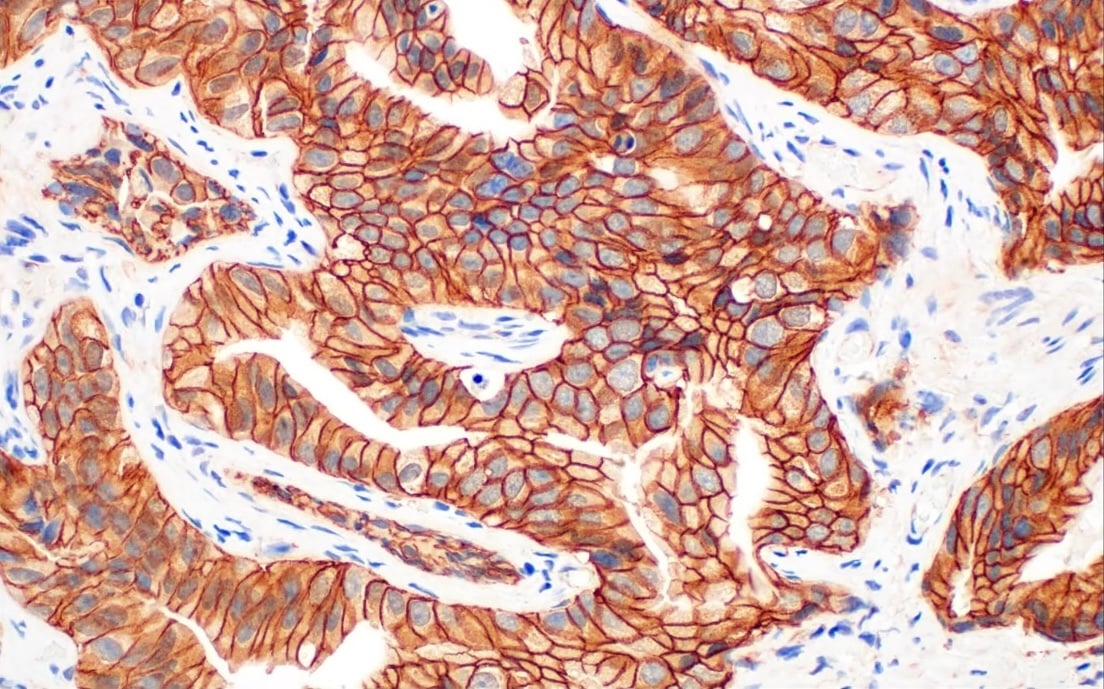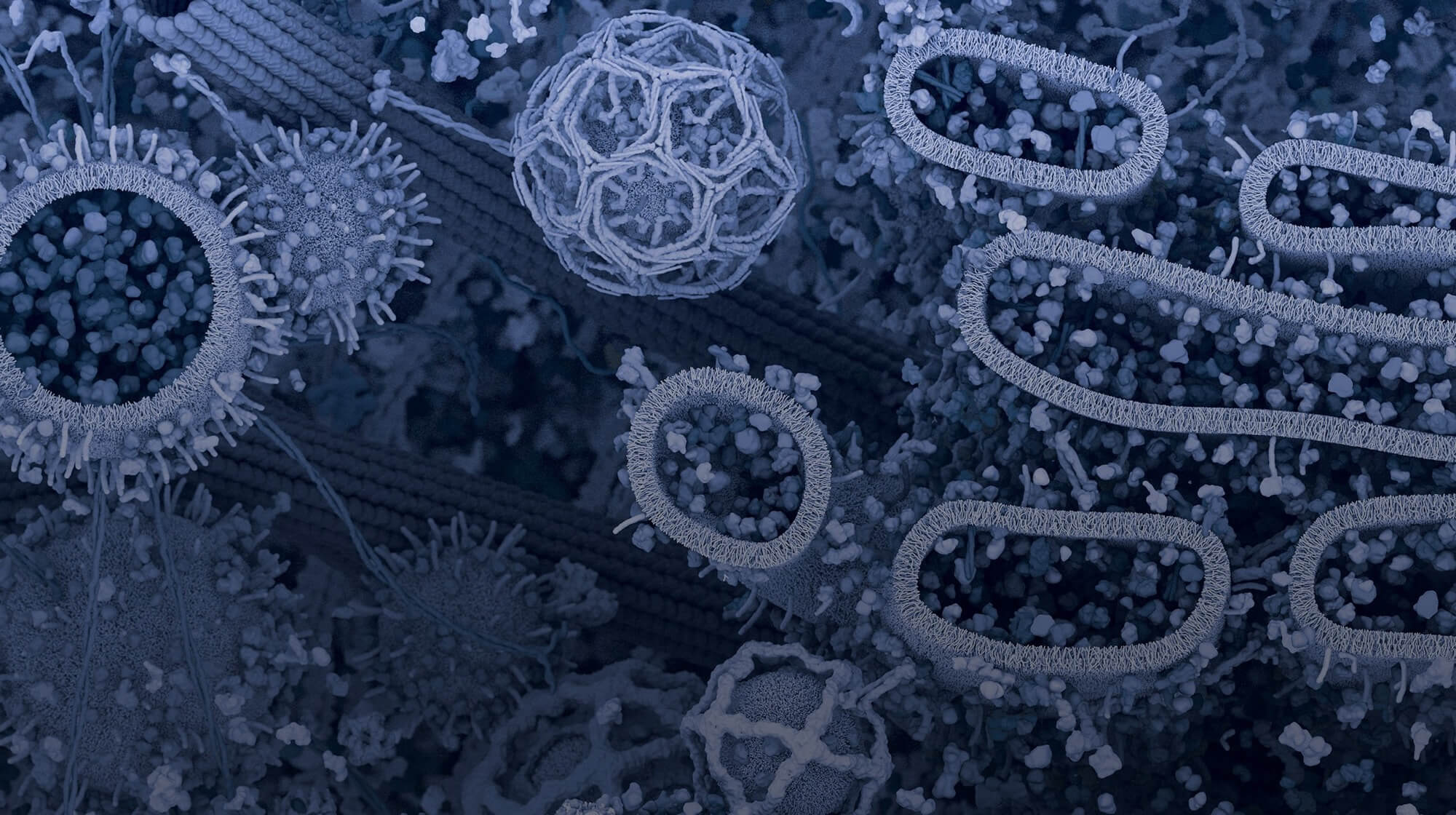皮肤癌有三种主要类型:基底细胞癌、鳞状细胞癌和黑色素瘤。黑色素瘤是三者中最致命的,占皮肤癌死亡例数的 90%。早期发现时,局限化黑色素瘤的 5 年生存率为 99%。然而,对于发生区域和远端转移的黑色素瘤,这个数值分别显著降至 63% 和 20%。造成这种不良预后的一个重大促成因素是对不可切除性转移性黑色素瘤缺乏有效、持久的治疗方法。1,2
与其他类型的癌症相比,黑色素瘤表现出较高的体细胞突变率。这些突变中大多数者是对黑色素瘤形成并不重要的过客突变或沉默突变。然而,已鉴定出许多突变为致瘤性突变或驱动突变,这些突变会导致信号通路的组成型激活,从而促进肿瘤的生长和存活。3
MAPK 通路和 PI3K/Akt 通路中促黑色素瘤的致瘤性突变
黑色素瘤中的 MAPK 信号转导
B-Raf 是黑色素瘤中最常见的突变致癌基因,其中 B-RafV600E 突变是最常见的突变,约在一半以上的黑色素瘤病例中出现。这种突变会驱动皮肤细胞持续的增殖信号转导。N-Ras 是第二常见的突变,约 30% 的黑色素瘤中存在这种突变。这两种突变都会导致下游 MEK 的激活,进而激活 MAPK。
c-Kit 和 Gαq 等其他致癌基因的突变同样会激活 MAPK 通路中的蛋白质,如 Ras、Raf、MEK 和 MAPK。总的来说,超过 90% 的黑色素瘤都存在 MAPK 通路异常激活,这使其成为治疗干预的理想靶点。1,4 几种针对 B-Raf 和 MEK 的抑制剂已获得 FDA 批准用于治疗黑色素瘤。
黑色素瘤中的 PI3K/AKT 信号转导
调节细胞增殖和存活的 PI3K/Akt 通路也与黑色素瘤有关。有趣的是,Ras 位于 MAPK 和 PI3K 通路的交叉点。因此,Ras 蛋白突变可以激活这两种通路。在三分之二的原发性和转移性黑色素瘤中观察到高水平的磷酸化 Akt。这可能部分是由于 10-30% 的黑色素瘤中观察到 PTEN 功能丧失突变。10% 的黑色素瘤中也存在 mTOR 突变,并且与较差的生存统计数据相关。1,3
黑色素瘤的其他潜在治疗靶
其他具有潜在治疗靶标的通路包括 Wnt 和 NF-kB 通路。然而,针对已知致癌因素的靶向治疗起初是有效的,但一旦肿瘤产生耐药性,疗效通常就无法持续。因此,需要新的战略方法来改善患者的临床结果。一个选择就是同时靶向多个驱动因素。例如,研究表明,当患者同时使用 B-Raf 抑制剂和 MEK 抑制剂治疗时,效果会更好。另一种方法是了解化疗耐药的机制,以找到延长靶向治疗疗效的方法。目前正在研究的一些机制包括重新激活 MAPK 通路,例如,通过选择性扩增 B-RafV600E 突变或激活替代致癌通路,如上调 PDGFRβ、c-Met 或 IGF-1R。3
利用免疫系统:黑色素瘤研究人员的免疫治疗方法
另一种潜在的方法是将靶向疗法与针对 PD-1/PD-L1 或 CTLA-4 等靶标检查点抑制剂的免疫疗法(如 pembrolizumab、nivolumab 或 ipilimumab)相结合。免疫疗法已实现晚期黑色素瘤的长期缓解,但反应率较低。理想的情况是找到一种治疗策略,能够将靶向治疗的反应率与免疫疗法的持久性相结合。然而,迄今为止,找到理想的组合仍然是一个难题。研究使用 B-Raf 抑制剂和抗 CTLA-4 免疫疗法治疗患者的临床试验最初很有希望,但最终因出现肝毒性、胃肠道毒性和皮肤不良事件而停止。找到正确的治疗组合、顺序和时机将有助于最大限度地提高疗效和持久性,同时提高转移性黑色素瘤患者的生存率。更好地了解不同靶向疗法和免疫疗法之间的相互作用将有助于设计组合方案来消除转移性黑色素瘤。2
参考文献
- Teixido C, Castillo P, Martinez-Vila C, Arance A, Alos L. Molecular Markers and Targets in Melanoma. Cells. 2021; 10(9):2320. doi: 10.3390/cells10092320.
- Yu C, Liu X, Yang J, Zhang M, Jin H, Ma X, Shi H. Combination of Immunotherapy With Targeted Therapy: Theory and Practice in Metastatic Melanoma. Front Immunol. 2019 May 7;10:990. doi: 10.3389/fimmu.2019.00990.
- Khaddour K, Maahs L, Avila-Rodriguez AM, Maamar Y, Samaan S, Ansstas G. Melanoma Targeted Therapies beyond BRAF-Mutant Melanoma: Potential Druggable Mutations and Novel Treatment Approaches. Cancers (Basel). 2021 Nov 22;13(22):584.
- Wellbrock C, Arozarena I. The Complexity of the ERK/MAP-Kinase Pathway and the Treatment of Melanoma Skin Cancer. Front Cell Dev Biol. 2016 Apr 27;4:33. doi: 10.3389/fcell.2016.00033.






 沪公网安备31011502018823号
沪公网安备31011502018823号